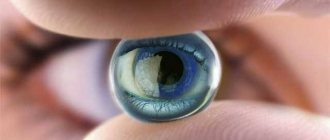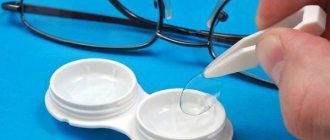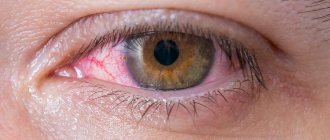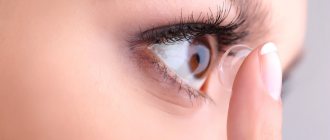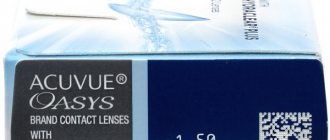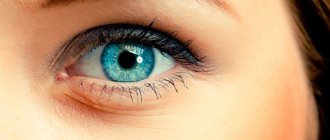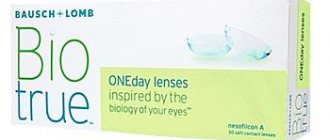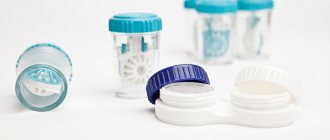What you need to know about extended wear lenses?
Among all types of contact lenses, long-wear lenses deserve special attention. Their key feature is that such lenses, unlike classical vision correction devices, are allowed for continuous wear (even during sleep) for up to 30 days.
The use of contact lenses requires careful care and obligatory adherence to hygiene rules. Regular contact lenses have to be removed every evening. If you leave them in front of your eyes while you sleep, you can get a serious illness.
Modern manufacturers of optical products have taken care of the convenience of contact lens wearers. Today's long-wear lenses are made of the latest material - silicone hydrogel, characterized by high oxygen permeability. The rate of air access to the cornea of the eye is very important for the safety of contact lens wearers.
The higher it is, the greater the protection against the accumulation of protein deposits on the cornea of the eye. Maximum biocompatibility is a key characteristic of monthly wear lenses. The user does not have to take care of the lenses every day. But, despite the possibility of not removing them for a whole month, most experts agree that it is better to remove them from time to time (at least once a week) at night and clean them using peroxide systems.
Monthly lenses are very thin and comfortable. They contain substances that constantly moisturize the cornea, allowing it to breathe freely.
That is why you can leave them on for a whole month. Such lenses are designed specifically for those people whose lives do not fit into the traditional regime. They are ideal for people with irregular work schedules, 24/7 jobs, such as truck drivers or security guards. Long-wear contact lenses are essential for nightlife enthusiasts, and they are also great for students.
At what age can you wear contact lenses? Read here.
Contact lenses for a month
A few more benefits of monthly contact lenses:
- ratio of price, ease of use and duration of wearing;
- large range of optical power for farsightedness, presbyopia, myopia from +6.0 to -12.0 diopters;
- variety of species:
- moisturizing;
- oxygen permeable;
- for dry eyes;
- with increased biocompatibility;
- with reduced deposit formation;
- for use in low light conditions;
- lenses for astigmatism;
- multifocal;
- colored;
- tinted colored lenses;
- “zero” (with normal vision), etc.
To find out how to choose lenses according to parameters, follow the link.
Air Optics lenses
Consequences of over-wearing contact lenses
The wearing periods indicated on the packaging by the manufacturer were invented for a reason. Numerous studies are being conducted to help determine safe wearing times, so you should not neglect the instructions in the instructions.
The following picture will help you avoid mistakes when putting on lenses:
Due to constant contact with the mucous membrane of the eye, the material from which contact lenses are made wears out and changes its physical properties.
Even the most expensive and high-quality lenses become uneven, porous and cloudy over time.
These changes in surface structure contribute to:
- accumulation of fatty deposits;
- accumulation of protein deposits;
- constant ingress and settling of dust, dirt and other particles coming from the environment;
- proliferation of pathogenic microorganisms.
Over time, harmful bacteria and dirt particles penetrate the lens so deeply that no cleaning system can handle them.
If you exceed the contact lens wearing time specified by the manufacturer, this can lead to serious consequences. Here are the main ones:
- Oxygen deficiency in corneal tissues. Chronic hypoxia provokes excessive vascular growth and corneal edema. These pathological changes cause irreversible visual impairment over time.
- Allergic reactions. The most common is papillary conjunctivitis. It is manifested by burning, itching, redness and photophobia.
- Non-infectious keratitis . With this complication, blood cells are deposited in the tissues of the cornea. This causes blurred vision and the appearance of so-called “floaters”. Keratitis occurs due to the body's excessive immune response to foreign proteins and fats on the surface of the lens.
- Erosia of the outer membranes of the eye. They occur due to excess friction and careless lens removal. The patient feels a strong burning sensation, pain, pain in the eyes. His vision deteriorates and excessive tear fluid is produced.
- Red eye syndrome. It is manifested by increased lacrimation, a feeling of sand in the eye and severe redness.
- Corneal deformation. Prolonged use of soft lenses without sufficient breaks can cause a sudden change in the shape of the cornea as a result of mechanical stress. The complication is manifested by a sharp decrease in vision.
- Bacterial and viral infections. The most common are blepharitis, inflammation of the optic nerve, iridocyclitis, panophthalmitis, and dacryocystitis.
The listed complications significantly worsen the quality of life and require long-term treatment, so it is much easier to prevent them if you follow the rules of wearing contact lenses.
Selection tips
Contact lenses are a medical product. Only a doctor can select them. Every salon where lenses are sold must have a specialist present. He will check your vision and write a prescription for lenses. When selecting, vision parameters, optical power, radius of curvature and other individual characteristics of the user must be taken into account.
Read also how to choose colored lenses in the article.
“30 days without removing” lenses have become very popular. You can wear them for a whole month without taking them off day or night. If desired, you can use only daytime wearing mode or a combined one: sometimes take it off at night, and sometimes not.
A flexible wearing schedule is exactly what doctors recommend to reduce all risks of corneal inflammation to zero. If the wearing mode is daily or flexible, then the lens must be stored in solution. If the wearing regime is long-term (all 30 days without removing), then the solution is not needed.
Leading brands of contact lenses intended for monthly wear:
- Air Optix Aqua Night&Day (“Ciba Vision”);
- PureVision, PureVision 2 HD (“Bausch & Lomb”);
- Maxima (“Maxima Optics”);
- Biofinity, Biomedics 55, Proclear (“Cooper Vision”);
- Mediterranee, Compatic, Air (“Carl Zeiss”).
What types of colored lenses are there?
There are four main types of colored lenses:
- tints, which make the light shade of the iris brighter. Thanks to this, the look becomes more expressive;
- colored. Their rich tinting and brighter edging radically transform the appearance. To change your eye color to a lighter blue, choose lenses with a richer pigment;
- carnival or crazy lenses. They are suitable for creating an unusual look. These lenses have an incredibly large selection of bright colors and intricate designs. For example, you can not only change your eye color to brown, but also shade it with an unusual pattern;
- beauty lenses to give your eyes a special shine.
Do you want a beautiful transformation with the help of colored contact lenses? Any optician will help you choose lenses that suit your look. Before purchasing, do not forget to consult an ophthalmologist.
How to wear it correctly?
Monthly contact lenses can be daily or extended-wear. The first ones must be removed at night and stored in special containers with solution for contact lenses. Extended wear lenses can be worn for a month without removal. They don't need a solution.
Each lens is contained in an individual blister. The wearing period of 30 days is counted from the date of opening the blister.
For convenience, the lenses are lightly tinted and have a side indicator, which makes them easier to find in the solution. There are monthly lenses with a beginner-friendly shape that makes them easier to handle. This allows them to be removed and put on without damage, even for unadapted users. An ophthalmologist or contact specialist will give you competent recommendations on putting on, wearing, and storing lenses correctly.
Read about the degree of myopia in the material.
Useful video
Extended information is presented in the video.
Lenses are often used by patients who have exceeded their wear period. However, your own health is at stake, which is sometimes much more difficult to restore than to buy a new pair of vision correction devices.
Author's rating
Author of the article
Alexandrova O.M.
Articles written
2029
about the author
Was the article helpful?
Rate the material on a five-point scale!
( 1 ratings, average: 5.00 out of 5)
If you have any questions or want to share your opinion or experience, write a comment below.
Recommendations for lens wearers
New lenses with high Dk (a measure of oxygen permeability) open up the possibility of long-term wear for people. However, prolonged wearing is not recommended for people:
- with immune system disorders;
- with severe allergies;
- systematically taking medications;
- problematic patients who have previously experienced intolerance to contact lenses (for example, papillary conjunctivitis).
Also, long-term wearing is unacceptable for people who have had problems with daytime wearing and for those who have unsuccessfully tried to wear them for 6 days in a row. If a person wants to immediately start using extended-wear lenses, then an adaptation period of at least one week should be provided for him with a daily regime of wearing lenses. Then you can only switch to prolonged wearing for 6 days, after which an examination by a doctor should follow. If no problems arise, the patient can switch to 30-day wear. This schedule will allow the eyes to get used to the lenses and determine the reaction of the cornea to the silicone hydrogel material.
Contact lenses for 30 days
Users of monthly lenses should remember:
- Even if the lenses are designed for continuous use for a month, a flexible wearing mode is still preferable.
- Lenses should be removed if discomfort occurs.
- A lens removed for a short time should be disinfected before putting it on.
- Do not use expired lens care products that have expired.
- 30 days is the maximum period of continuous wearing of such lenses. Don't experiment and try to wear them longer. After this period, lenses lose their properties and can cause various inflammations of the cornea of the eyes.
This article will answer you what extended lens wear is.
Would you like to have tint lenses without diopters? If yes, then click on the link.
Selection of multifocal contact lenses:
Features of using contact lenses
Contact vision correction devices are an optimal alternative to glasses for a number of reasons. One of the key points is that such optical products do not hinder movement at all and allow you to freely play sports and lead an active life.
In addition, among the undoubted advantages, experienced users note that they do not fog up when temperature changes, provide a wide viewing angle and the highest image clarity. And with age-related changes in vision and the occurrence of presbyopia or astigmatism, multifocal lenses with different optical zones allow you to forget about using several pairs of glasses.
Manufacturers of modern contact optics care about their customers, which is why there are many different types of lenses.
Most modern contact products have excellent moisture content, breathability and are absolutely not noticeable when in use.
They differ in material, design, possible operation time and wearing mode. Ophthalmologists recommend choosing optical products not only based on the individual parameters of the visual system, but also taking into account your lifestyle.
So, if a person has an irregular work schedule, often travels or is on trips, he needs ophthalmic products with a special wearing regime.
conclusions
The creation of silicone hydrogel contact lenses has become a huge step forward in the fight against hypoxia. This invention gave patients the opportunity to wear lenses for a long time, comfortably for up to 30 days. However, it is important to properly prepare your eyes for prolonged wear, check your vision and select contact lenses and their wearing regimen, follow the rules of hygiene and lens care, and also conduct regular eye examinations with a contact specialist. If you need daily contact lenses, you can read about them here, but consult your doctor before purchasing.
